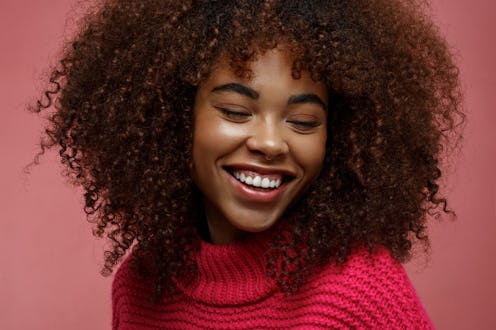Style
This Genius Hack Will Help You Figure Out When To Use Blusher & When To Use Bronzer

Blusher or bronzer, blusher or bronzer? It's the age old beauty debate that divides those looking to enhance their complexion. While blusher has always been in, recent years have shown that bronzer, its more summery alternative, is just as good at providing an enviable flush on the cheeks. So when should you use bronzer or blusher? Let's lay it all out.
What is blusher, and what is bronzer?
Let's start with the basics; blusher is a makeup product with the purpose of adding a hint or flush of colour to the cheeks. It comes in a variation of formulas, most popular being powders and creams. Blusher has been a beauty staple for women for years, even dating back as far as ancient Egyptian times, according to Business Insider.
Bronzer, on the other hand, is used to achieve more of a shimmery glow on the face, neck and décolletage. Bronzer is often associated with contouring, although as Allure reports there are differences, the latter of which is often associated with Kim Kardashian.
When is it best to use blusher?
For me, blusher is definitely more of a winter thing. Skin can look dull and pale in the winter, meaning a pop of colour on the cheeks can really brighten up the complexion. It can help provide a 'fresh-faced' effect. Blusher also offers targeted colour, rather than an all-over boost.
Blusher is great because it comes in so many different hues, which suit all skin tones. When it comes to picking the type of blusher you want formula-wise, it's really all down to preference. I am a big fan of cream blusher (applied with fingers), which I find gives more of a dewy, glow-enhancing finish. I find powder blushers tend to have a slightly longer lasting effect, however, and are easy to apply with a big fluffy brush.
When is it best to use bronzer?
Summer is peak bronzer-wearing time, if you ask me. We all want to look a little more sun-kissed around this time of year, and bronzing powders are best for this. For an all-over glow, a bronzer with a light shimmer works well, swept over the areas of the face the sun would hit, as well as on the neck and décolletage.
Bronzer can also be used to define the face in a way that blusher can't. The contouring trend, once huge, is still pretty popular in the world of beauty, and has taught a generation of makeup fans that playing with bronzer can totally sculpt a face. For a contoured effect, pick a matte bronzer without any shimmer, and apply it lightly just beneath the cheekbones.
Bronzer can be used year-round, of course, and is a great alternative to blusher when you want to covet more of a natural vibe. Simply dust a little all over the face with a big fluffy brush, and swipe some over the eyelids in place of eyeshadow.
When is it best to use them together?
Can't decide between blusher or bronzer? The products do not strictly have to be used independently, of course. You can use blusher on the apples of the cheeks, as well as a little bronzer to contour or add a sun-kissed finish. But which goes first?
“I layer on bronzer first because it’s easier to blend the blush into the bronzer, helping them gel together,” Makeup Artist Julianne Kaye told makeup.com.
While anything goes, using blusher and bronzer together is perhaps best suited to a more 'done' look for an evening event or night out. Saying that, I use both daily! As long as you blend and go lightly, blusher and bronzer can be conspirators rather than competitors.